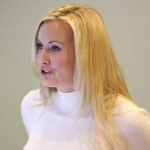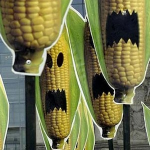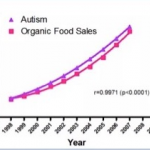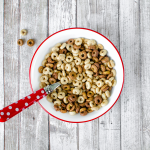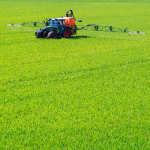Carey Gillam is a well-known anti-GMO activist who rejects the scientific consensus, regularly reports easily provable lies, and works for an organization that gets most of its money from 9/11 truthers.
glyphosate
A website that's purportedly focused on rigorous science journalism has published a conspiratorial anti-glyphosate rant, written by an environmental activist with no relevant academic credentials.
The glyphosate scandal involving the International Agency for Research on Cancer has severely – and perhaps irreparably – damaged the reputation of the World Health Organization. Sixteen scientists contacted by Reuters refused to answer any questions about the glyphosate document. That's not how science operates; that's how Fight Club operates.
The New York Times smeared a company at the request of an organic food lobby. Instead of behaving like responsible, skeptical journalists they chose to act like a PR firm. Such is the state of affairs at America's self-appointed "Paper of Record."
In Part 1, we looked at some very strange science coming from the International Agency for Research on Cancer. Here, we examine some possible reasons for an apparent intentional omission of crucial data, which led to the misclassification of glyphosate as a "probable carcinogen." Looks like IARC knew this, but misclassified it anyway.
Glyphosate is perpetually in the news. However, last month was especially busy because various agencies concluded that it either did – or did not – cause cancer or kill butterflies. The herbicide has even been implicated as a cause of autism, but the science is terrible. Perhaps the worst science came out of MIT in 2014 — confusing correlation with causation. A big no-no.
"Lying" is considered one of those words civilized people should never say. That's why politicians never use it. Instead, their opponents are "misinformed" or "misspeaking" or "using alternative facts."
Well, the time for civility is over. Journalist -- if we can actually call him that -- Danny Hakim is lying to you. And it's not his first rodeo, either. He's built quite a track record for himself at the New York Times, publishing distorted information about GMOs and comparing agricultural pesticides to "Nazi-made sarin gas."
The Food Babe is at it again. This time she's posted an analysis on her website of the amount of glyphosate that can be found in popular American foods, followed by her reasons of why we should be scared. Here is why you should (1) not be scared, and (2) not listen to The Food Babe. Ever.
There's a long history of ridiculous fearmongering -- centering on BPA, MSG, Alar, DDT to name a few -- by environmental activists masquerading as health experts. Today, the whipping boy that takes the brunt of the unfounded chemophobic assault on science is the herbicide glyphosate.
California is ranked 47th in the U.S. in science education. So, it is not terribly surprising that the Golden State is making some rather poor choices in wine (whine) country, and looking mighty foolish in the process.
Glyphosate, the active ingredient in the herbicide Roundup, has been widely attacked as a human carcinogen — although there are few data supporting that charge. A recent study was unable to demonstrate any glyphosate in the breast milk from mothers living in agricultural areas — which should make anxious parents relax. But since the chemical isn't really a threat to human health, all we can say is "So what?"
The ongoing battle over whether glyphosate causes cancer seemingly ended April 29, with the online posting of an EPA report stating that the herbicide should be classified as “Not Likely to be Carcinogenic to Humans.” But then, the report was taken down from the website three days later. Here's our summary of the findings, in the context of the 30 year-long disagreement.
